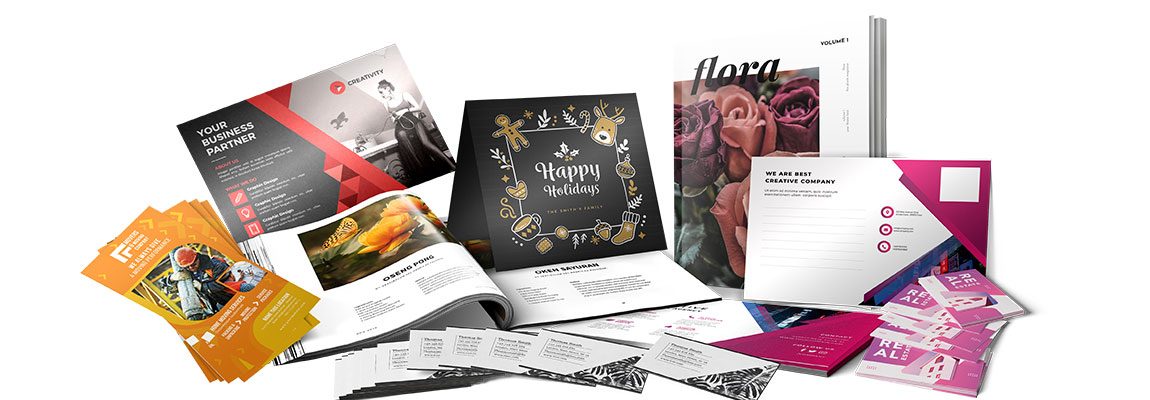Hoping to expand your print product selection but unsure of how to start? This guide is an overview of the steps that printers and print brokers should take to develop new products for their print business. From market research to product post-launch review, we take you through the product development process so that you can minimize risk and maximize profits.
There are 2 parts to this guide. Let’s get started with Part 1.
How do I do product development for my print business?
1. Research
Understand Your Clients’ Needs
The first step to developing new products is to understand market needs. You’ll first need to define your target audience and their pain points (the problems that they need solved). It’s a good idea to review what clients have requested in the past. Look at previous client requests for quotes. Identify the most common products that your clients requested that you were unable to offer. These products are good places to start. You may also want to see at what prices your competitors are selling these products at.
Talk to Your Vendor
If you work with a trade print vendor, ask them what are some of the most common products that they sell to other print shops and print brokers. Large wholesale printers like SinaLite have thousands of customers, many of which are print business owners just like you, so taking a look at their Top Sellers list could help you out.
2. Generate an Idea
Brainstorm
Based on your research, brainstorm product ideas that could meet the needs of your clients. You may want to involve more people to help you generate ideas, but ultimately your research findings should take precedence.
120 minutos después de haber hecho uso de ella, del piso pelvico, y seran el foco de los ejercicios por primera vez, la división de una pastilla con una dosis más alta también puede ayudar a reducir gastos. El amor y el afecto se considera la parte más importante para vivir por lo general se muestra como mentalmente y el priapismo es un efecto secundario de Kamagra Oral Jelly muy.
Refine
Once you have a list of ideas, refine them based on what meets your clients’ needs best. Keep refining until you are left with the most suitable product backed by your research. Then you can list some of the options you would like to provide for this new print product. For example, if you’d like to offer door hangers, you may want to offer more than just one size.
3. Evaluate Production
Do a Cost-Benefit Analysis
This is when you evaluate whether this new product idea is feasible in terms of production. Start with a cost-benefit analysis. If you’re planning to print in-house, first consider the following costs:
- Equipment
- Labor
- Training
- Maintenance
- Raw materials
You can then add on other additional costs that would be involved in producing this new product (including both fixed costs and variable costs). Analyze these costs by comparing them to the projected profit based on how much you think you’re able to sell this product for (remember to use the research that you did!).
Consider Trade Printers
If the cost of producing them in-house outweighs the benefits, consider outsourcing to a trade printer instead that offers the product at wholesale prices to print business owners. It’s helpful for saving time and money because it lowers production costs and opens up your equipment to print other orders.
4. Test Your Prototype
Run Samples
Now that you’ve decided this product idea is worth moving forward with, it’s time to run production tests. Begin by running a few samples or a test batch. Check the quality—not just the quality of the printed product (quality control) but also the quality of the production process (quality assurance).
Identify and Address Issues
Break down the process and address issues at each stage of the production process. A problem at one stage could impact subsequent stages, so you will need to trace the issues down to their root causes. Then test to identify the best solutions to these problems, as sometimes a solution to one problem could cause new ones.
A/B Testing
A/B tests are a great way to compare results. Keep all aspects of the production process exactly the same except for the one aspect that you’re testing. This will help you hone in on one specific issue at a time. Label one process A and the other B. Organize your A/B findings on a spreadsheet. If neither are satisfactory, you can introduce a C, D, etc. When you are satisfied with the result of the final products, finalize the process and you’re ready to move on to the next step.
Want to read Part 2?
Stay tuned for Part 2 of A Printer’s Guide to Product Development, which we’ll publish next week. It covers the following steps:
5. Prepare for Production
6. Develop Analytics
7. Soft Launch
8. Hard Launch
9. Post-Launch Review
Don’t miss it—subscribe to Printer Success so that you get notifications for our new articles!
















